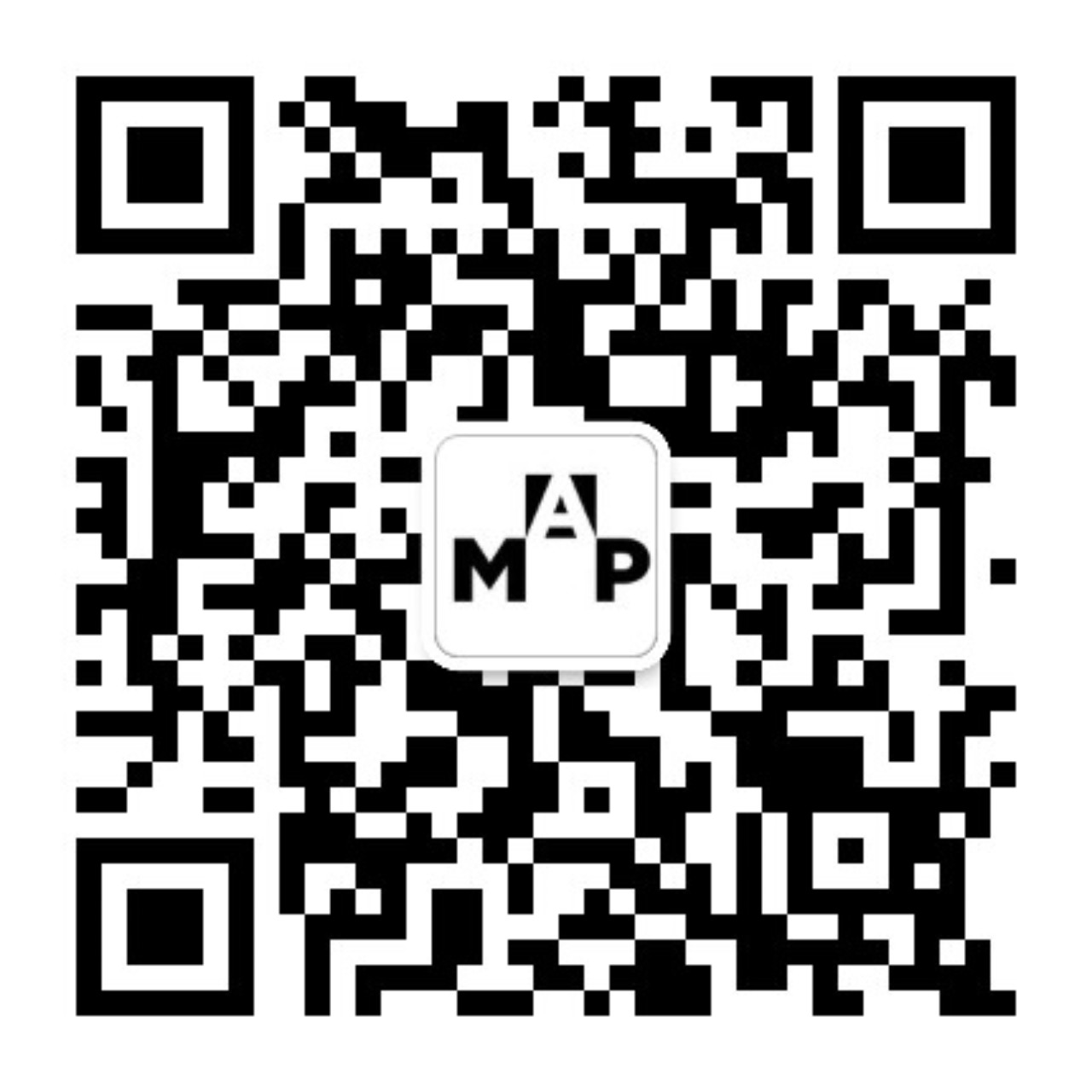
 媒体中心
媒体中心
The Museum of Art Pudong (MAP), located beside the Oriental Pearl television tower in Shanghai, will open its doors to the public for the first time on July 8, 2021. Designed by the renowned Ateliers Jean Nouvel, MAP aspires to become a new landmark of Shanghai’s cultural landscape and a platform for international exchange of arts and culture. For its inaugural program, the museum will present three major exhibitions: Light: Works from Tate’s Collection; Joan Miro. Women, Birds, Stars; Cai Guo-Qiang: Odyssey and Homecoming.
Touring from the Palace Museum in Beijing where it opened last December, Odyssey and Homecoming features 119 of Cai’s signature gunpowder paintings and other works, including his widely acclaimed first-ever VR work Sleepwalking in the Forbidden City. The works in the exhibition represent Cai’s research, exploration, and voyage across the globe, recreating his Individual’s Journey Through Western Art History project for audiences in China. The exhibition will take place across three floors of the new 40,000 m2 museum space. In three large galleries on the second floor, the exhibition unfolds across two sections. “Odyssey” features artworks from his solo exhibitions in world-renowned museums, in which he engages with the essence of Western art and civilization embodied within those institutions. He dialogued with classical Greek and Roman art in Pompeii and the National Archaeological Museum of Naples, the Italian Renaissance at the Uffizi Galleries in Florence, the Spanish Golden Age and Baroque Art at the Prado Museum in Madrid, Russian Socialist Realism at the Pushkin Museum in Moscow, Modernism at the Solomon R. Guggenheim Museum in New York, and the early roots of Modern art in Cézanne's hometown of Aix-en-Provence, in addition to ongoing trips to trace Medieval art history. The other half, “Homecoming,” debuts new works that encompass aspects of traditional Chinese art and culture as well as the cosmos as his eternal homeland. The fourth floor will showcase the artist’s early works in dialogue with his original passion for painting, as well as A Material Odyssey, a special exhibition curated by the Getty Conservation Institute in Los Angeles.
This exhibition marks another important step in Cai’s homecoming to Shanghai, following his 2014 solo exhibition at the Power Station of Art. Cai first saw foreign painters’ original works in person decades ago in Shanghai, which also sowed the seeds for his Individual’s Journey Through Western Art History. Visitors will see how the fusion of and dialogue between the past and present, East and West, can all coexist in an individual. Showing this may have some special significance in a world that is shadowed by the pandemic and currently deglobalizing to a state of mutual isolation. The exhibition poses the questions: Can different cultures reach mutual respect? Can great cultures specific to certain people become shared heritage for all humankind?
Through his trademark artistic process, Cai intricately patterns gunpowder and explodes it on canvas: a fiery event that leaves painterly residues. Rather than division and isolation, the explosion as the paintbrush coalesce in Cai’s monumental works to advance cultural exchange and shared understanding beyond nationality. The artworks on view color a new global vision for the history of art and imbue painting with a reinvigorated capacity to engage with contemporary issues.
Li Jinzhao, Chairman of the Shanghai Lujiazui Development (Group) Co., Ltd, comments, “As the MAP’s opening exhibition, Odyssey and Homecoming presents how an artist can travel freely without the shackles of region, culture, or convention. It manifests the museum’s spirit of being based in Shanghai and looking at the world and its fundamental mission of connecting the Eastern and Western cultures.”
As a special new commission for Odyssey and Homecoming, Cai created the site-specific, kinetic light installation Encounter with the Unknown for the monumental X Hall at MAP, which measures over 30 meters tall and with a floor area of 17 square meters. A spectacle inspired by the nature-based cosmology of the Mayan civilization, Encounter with the Unknown weaves together images from stories and myths of humans who “defied gravity” and “embraced the cosmos,” forming a tapestry of cosmologies from different civilizations. The installation takes the form of hand-crafted Mexican castillo fireworks, combining a rustic structure with the technology of computer-operated “light drawings” to create a dynamic, multidimensional image filled with wonder. The work is simultaneously a spacetime capsule and a “cosmic tree” that connects the ancient with the modern and the familiar with the foreign. Both in its concept and form, the work closely complements the “four-dimensional space-time” design concept proposed by the Museum’s architect and Cai’s vision of transforming this space into an artist’s laboratory.
Cai Guo-Qiang writes in his Artist Statement, “Shanghai was the actual and tangible embodiment of Western culture for the young me…This exhibition addresses the wonder of my encounters with the West, the struggle over my unrequited love for my predecessor painters, and the deep breaths that I have taken in their hometowns and in the gardens of their art. Riding on the kite of my hometown, steering the spacecraft of human childhood across romantic horizons, just as the cosmic tree, castillos, the extraterrestrials, and ‘encounter with the unknown.’ The odyssey is also a search for a greater hometown. I seek to encounter more artists from the past and present, from China and abroad, and through them, discover a shared ‘far-off land,’ a cosmic and eternal hometown.”
The exhibition also presents ten documentary videos directed by Shanshan Xia, featuring several major art museums worldwide, and the classic works and artists from various chapters of art history with whom Cai has dialogued. Among these videos is a new documentary short highlighting the Museum of Art Pudong project. An exhibition catalogue will be available at the opening. With nearly 380 pages and over 750 illustrations, the catalogue presents a comprehensive overview of the artist’s Individual’s Journey through Western Art History. It also features A Guide to Cai Guo-Qiang’s Dialogues: 99 Projects and Keywords, the first-ever guide that attempts to synthesize Cai’s expansive artistic output and the fundamental concepts and methodological pursuits behind it.
For further Information and images, please contact: luyang@museumofartpudong.org.cn
NOTES EDITORS
About Museum of Art Pudong
Museum of Art Pudong (MAP) is located in Lujiazui Central Business District in Shanghai and has been designed by Ateliers Jean Nouvel (AJN).
MAP aims to establish itself as an international cultural landmark for Shanghai and an important platform for global cultural and art communication. MAP will primarily focus on the presentation and exchange of international arts, supplemented by domestic art exhibitions. It hopes to become a destination of choice for artists and visitors from around the world, providing a platform for the presentation of world class art.
MAP intends to complement the existing art museum community in Shanghai. It will enhance Pudong New Area through the creation of fresh opportunities for public access to culture. The establishment of MAP also builds upon Shanghai’s, and especially Pudong New Area's, historical traditions and recent successes.
About Cai Guo-Qiang
Cai Guo-Qiang (b. 1957, Quanzhou, China) was trained in stage design at the Shanghai Theatre Academy, and his work has since crossed multiple artistic mediums including drawing, installation, video, and performance. Cai began to experiment with gunpowder in his hometown Quanzhou, and continued exploring its properties while living in Japan from 1986 to 1995, which led to the development of his signature outdoor explosion events. Drawing upon Eastern philosophy and contemporary social issues as a conceptual basis, his often site-specific artworks respond to culture and history and establish an exchange between viewers and the larger universe around them. His explosion art and installations are imbued with a force that transcends the two-dimensional plane to engage with society and nature.
Cai was awarded the Golden Lion at the Venice Biennale in 1999, the Hiroshima Art Prize in 2007, and the Fukuoka Asian Culture Prize in 2009. In 2012, he was honored as a Laureate for the prestigious Praemium Imperiale, which recognizes lifetime achievement in the arts across categories not covered by the Nobel Prize. The same year, he was named as one of the five artists to receive the first U.S. Department of State Medal of Arts for his outstanding commitment to international cultural exchange. His recent honors include the Barnett and Annalee Newman Foundation Award in 2015, the Bonnefanten Award for Contemporary Art (BACA), the Japan Foundation Awards, and the Asia Arts Award Honoree in 2016, and the 2020 Isamu Noguchi Award. Cai also served as Director of Visual and Special Effects for the Opening and Closing Ceremonies of the 2008 Summer Olympics in Beijing.
His many solo exhibitions and projects over the past three decades include Cai Guo-Qiang on the Roof: Transparent Monument at the Metropolitan Museum of Art, New York in 2006 and his retrospective I Want to Believe at the Solomon R. Guggenheim Museum, New York in 2008. His solo exhibition Da Vincis do Povo toured to three cities in Brazil in 2013, attracting over one million visitors. The Rio de Janeiro edition was the most visited exhibition by a living artist worldwide that year. In June 2015, Cai created the explosion event Sky Ladder in his hometown Quanzhou. The artwork became the centerpiece of the Netflix documentary Sky Ladder: The Art of Cai Guo-Qiang, directed by Academy Award winner Kevin Macdonald.
In recent years, he embarked on Individual’s Journey Through Western Art History—a series of solo exhibitions in world-renowned museums, in dialogue with the Western art history embodied by these institutions: October at the Pushkin State Museum of Fine Arts (Russia, 2017), The Spirit of Painting. Cai Guo-Qiang at the Prado at the Prado Museum (Spain, 2017), Flora Commedia: Cai Guo-Qiang at the Uffizi at the Uffizi Galleries (Italy, 2018), In the Volcano: Cai Guo-Qiang and Pompeii at the National Archaeological Museum of Naples and Pompeii Archaeological Park (Italy, 2019), and his curated exhibition Non-Brand 非品牌at the Solomon R. Guggenheim Museum, New York (U.S., 2019). Other major solo exhibitions in 2019 include The Transient Landscape at the National Gallery of Victoria, Australia, Cuyahoga River Lightning at the Cleveland Museum of Art, U.S., and Gunpowder Art at the Ashmolean Museum, UK. He also realized the explosion event Encounter with the Unknown: Cosmos Project for Mexico in 2019.
On December 15, 2020, Cai opened his solo exhibition Odyssey and Homecoming at the Palace Museum, Beijing, the first ever held by a contemporary artist. Coinciding with the 600-year anniversary of the Forbidden City’s founding, this exhibition is the culmination of Cai’s ambitious multi-year project Individual’s Journey Through Western Art History.
He has lived and worked in New York since 1995.
 上一篇
上一篇

 沪公网安备 31011502017932号
沪公网安备 31011502017932号



